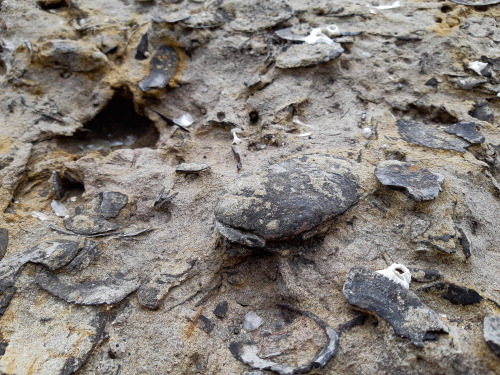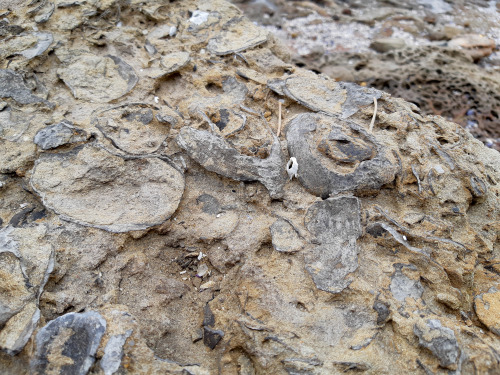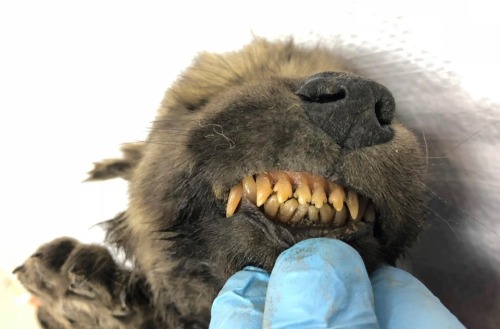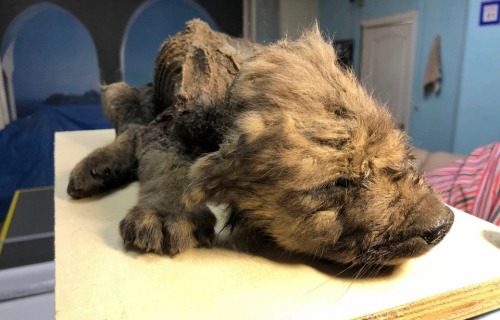Our Resident Red Rat Snake Has Been With Us For Quite A Few Years Now. He Was Brought To The SNC Because
Our resident red rat snake has been with us for quite a few years now. He was brought to the SNC because he has a chronic neurological disease that prevents him from surviving on his own in the wild. The typical life span of red rat snakes in the wild is six to eight years. However, because this guy is getting a high grade diet and medical care, his lifespan is expected to be extended.
More Posts from Sawgrassnaturecenter and Others
Those of you that follow us on social media may already be familiar with Bumper and the reason he got his name. Bumper likes to bump shoes with the front of his shell. This is a territorial display that is meant to inform the keeper of the day that they are in his home and they are only welcome as long as there is food.
Bumper is with the Sawgrass Nature Center because he is considered an exotic species. That means his species is not native to Florida.
What is Bumper?
Greek Tortoise
The Greek tortoise is one of five of the Mediterranean species of tortoises. They can grow to an average size of 5-8 inches in length, making them one of the smaller species of tortoise. Even though they have an average lifespan of about 50 years, they have been recorded to live up to 125 years in captivity with proper care and treatment.
Want to see Bumper?
Even though these guys are small in size, they require a pretty big habitat space to be kept happy and healthy. This includes lots of dirt and vegetation. That’s why if you come by the SNC to visit Bumper, you may have a hard time spotting him in such a large exhibit area. The best time to see Bumper is feeding time Tuesdays-Sundays around 11am-12pm. You might even get to see him do his famous “Bumper” display.
natgeotravel
Video by @bertiegregory | A harp seal pup takes a swimming lesson with its mother in the Gulf of St Lawrence, Quebec, Canada. This species has an extraordinary breeding cycle. Females give birth to pups on moving ice floes. They suckle the pup for just 10 to 14 days. During the last few days of this short period, they encourage the pup into the water to help them learn to swim. After the swimming lessons, they abandon the pup. The females then mate with the males who have been waiting nearby before heading north to their feeding grounds. The pups at two weeks old are left alone with nothing to eat.




Ancient sea bottom exposed along a modern seaside rocky platform. This immense amount of fossilized shells is preserved in ~250 million year old sea sediments which would have been a feeding grounds for all these bivalves.
South coast, NSW, Australia.


Dogor is the 18,000 year old pup that was found within the Siberian Permafrost, yet is not quite a dog nor a wolf, but a puzzling connection to both.
Dogor has been miraculously preserved within the permafrost, with its fur, teeth and even whiskers incredibly intact. Radiocarbon dating has placed the animal at 18,000 years old and researchers have suggested that the animal passed away at just 2 months old. The name Dogor means “Friend” in Yakut, a language spoken within Eastern Siberia.
Generally, genetic analysis can quite easily discern whether a discovered canine is a wolf or dog, but in this instance, the genetics suggest that it could be an ancestral link to both. Interestingly, Dogor lived at a time in canine evolutionary history when dogs and wolves began to branch off from each other.The general scientific consensus is that dogs and wolves split from a common ancestor, however, the process of how “dogs became dogs” is certainly contested, and Dogor could be a crucial piece in that puzzle.
If Dogor is determined to be a dog, it will be the oldest ever discovered. The next oldest, the Bonn-Oberkassel puppy, was discovered in Germany and was clearly determined to be a dog of around 14,000 years old, buried with a man and a woman.
The progression of climate change is melting the permafrost more rapidly, and discoveries like these are becoming more and more commonplace.
Images via Sergey Fedorov/The Siberian Times

A pair of red shouldered hawks we’ve been seeing around the nature center.

Sitting in on a virtual meeting like…
This little fish is called a Garibaldi, found at Channel Islands National Marine Sanctuary! This fish gets its name from the 19th-century Italian leader of the same name whose famous army wore flashy red/orange colors into battle.(Photo: Keith C. Flood. Image description: A bright orange Garibaldi fish head-on and close up to the camera.)
(via)










Luckily there was a quack in the ice
Decline of the Everglades Snail Kite
The Everglades Snail Kite is a hallmark of Florida wildlife. Found in central and south Florida, this magnificent bird of prey thrives in swampy, wetland habitats (Audubon Society, 2020). Unfortunately the population of this seasoned hunter has dropped at an alarming rate.
The Everglades, a vital habitat to the Snail Kite, has been significantly reduced in size due to expanding infrastructure and construction of surrounding human populations (National Park Service, 2019). Fortuitously, organizations such as the Everglades Foundation have worked tirelessly throughout the years to restore and conserve the Everglades which is home to many of Florida’s unique species. (The Everglades Foundation, 2020).
But habitat loss is not the only struggle the Everglades Snail Kite faces. Their curved beaks are adapted specifically to feed on its namesake: Florida Apple Snails, or Pomacea paludosa. While there are several species of Apple Snails currently located in Florida, Pomacea paludosa is the native species of apple snail to Florida. There is some debate over whether local populations of the Florida Apple Snail may be a separate species from Pomacea paludosa (Schad, 2018), but we will only be referring to Pomacea paludosa for the purpose of this article.
One might think that the addition of new types of apple snails to Florida would mean the expansion of food for the Everglades Snail Kite, but that does not seem to be the case. Their beaks are so specifically adapted to the smaller, curved shells of the Pomacea paludosa, that the Everglades Snail Kite cannot use its beak successfully to feed on larger species of Apple Snails that are invading Florida wetlands. This poses another problem where the larger species of invasive apple snails are outcompeting and displacing the smaller Pomacea paludosa. The Everglades Snail Kite is facing food loss in addition to habitat loss.
But all is not lost. Harbor Branch Oceanographic Institute, located in Fort Pierce, Florida has successfully completed research on the practice of captive breeding the Florida Apple Snail with a long-term goal of finding ways to replenish wild populations of Pomacea paludosa (Garr, Amber, Helen Posch, Margaret McQuillan, Megan Davis, 2012). These practices, if safely regulated and approved, could be used to help replenish the population of the Everglades Snail Kite by providing it with more food. Regulations and controls are needed to ensure that captive populations would not introduce new bacteria, or diseases to wild populations.
The Everglades Snail Kite is not the only endangered species in Florida, but it is a wonderful example of how—when united—people have the chance to improve many environmental problems.
Audubon Society, 2020. The Everglades Snail Kite. Audubon Florida.
[https://fl.audubon.org/birds/everglade-snail-kite]
Schad, Morgan. 2018. The Discovery of a Forgotten Species in an Unexpected Location: Pomaceamiamiensis in Palm Beach County. Harriet L. Wilkes Honors College.
The Everglades Foundation, 2020. About. [https://www.evergladesfoundation.org/about]
Garr, Amber. Helen Posch. Margaret McQuillan. Megan Davis. 2012. Development of a captive breeding program for the Florida apple snail, Pomacea paludosa: Relaxation and sex ratio recommendations.
Aquaculture. Volume 370-371, Pages 166-171.
[https://www.sciencedirect.com/science/article/abs/pii/S0044848612006163?via%3Dihub]
National Park Service. 2019. Restoration of Everglades National Park. U.S. Department of the Interior.
South Florida Natural Resources Center. Everglades National Park.
[https://www.nps.gov/ever/learn/nature/upload/RestorationFactSheet%20Lo%20Secure.pdf]
-
 deadwinggremlin liked this · 3 years ago
deadwinggremlin liked this · 3 years ago -
 sawgrassnaturecenter reblogged this · 4 years ago
sawgrassnaturecenter reblogged this · 4 years ago

The Sawgrass Nature Center (SNC) is a nonprofit located in South Florida. Our mission is to educate the public about native wildlife and environmental stewardship. We also rescue, rehabilitate, and release injured, orphaned, or sick wildlife. Animals that cannot be released due to permanent injuries or disabilities are given a forever home on site with animal keepers that know how to properly care for them. We are able to operate due to donations from generous patrons. If you are interested in helping us further our mission, check us out at: https://sawgrassnaturecenter.org/
202 posts